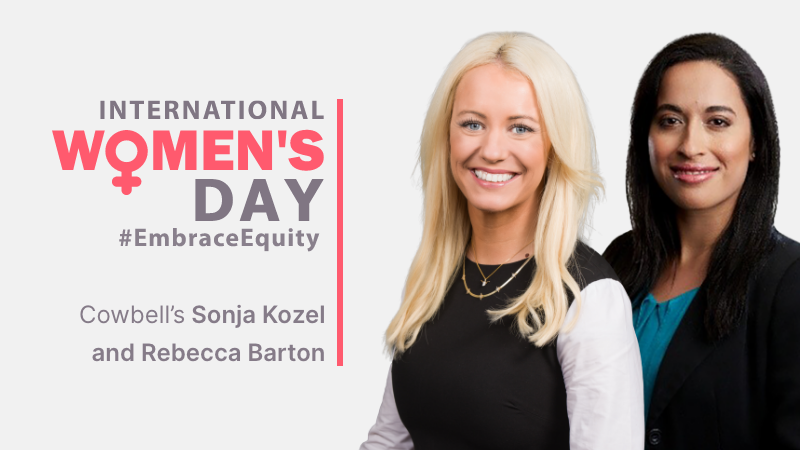“A team is not a group of people who work together. It is a group of people who trust each other.”
– Simon Sinek, “Start With Why”
Two things are essential for developing long-term partnerships in our business: building trust and credibility, and providing a seamless experience. When a client or broker works with us it is our responsibility to deliver on that, but often, there is internal division that can diminish the client’s overall experience.
There’s research dating back to 2007 that indicates “a historical friction exists in the insurance industry between risk management and sales. A major challenge facing the industry is to navigate this friction and empower both underwriters and business development channels to work in a collaborative environment… The key to success is being able to bring these two different, yet intricately linked, disciplines together as part of a seamless transactional environment.”
Brokers and clients want simplicity. They want to know that the person or team they contact is on their side, knows their business and will ensure their needs are met. Collaboration between sales and underwriting is foundational to ensuring a comprehensive and client-centric approach. Sales teams are on the front lines, cultivating relationships with clients and understanding their unique needs and objectives and the underwriters delve into the intricate details of risk assessment and policy customization. By fostering a strong partnership, organizations can bridge the gap between client expectations and risk management.
This desire to create a positive and more integrated experience for clients is why carriers have streamlined their processes, shifting from transactional touchpoints to a fully connected policy lifecycle, with the addition of a “relationship management” function within the sales and distribution team. Without a centralized approach, a single client or broker may have to connect with five or more individuals – from risk engineering and underwriting to claims – throughout the lifecycle of their policy. This disjointed approach is not an effective way to grow a successful business yet is often so deeply ingrained. Many brokers are so used to the “market-facing underwriter” role that they often seek out direct dialogue with underwriters, as they know that they are the ones with the authority to write business and make changes to terms.
To understand how sales and underwriting can achieve greater harmony, I’ve outlined where these roles overlap, potential points of friction, and practical strategies to overcome it.
What Are the Sales and Underwriting Functions Responsible For?
Both sales/distribution and underwriting teams can lead the way when it comes to bringing in new business, through new or existing relationships. First impressions with a new carrier are critical and effective collaboration can be the key to unlocking future success. Sales teams can benefit from underwriting data like risk profile insights and claims history to personalize their outreach to clients, increasing the likelihood of conversion while minimizing claims risk that could impact profitability. On the other hand, sales teams can share insights on client preferences, unique pain points, and industry trends to help underwriters make more informed decisions about pricing and coverage, enhancing the overall attractiveness of insurance products.
The functions can be complementary. Both teams are expected to drive overall growth and profitability; underwriters are held to standards within their line of business or segment overall, and sales teams for the amount and type of business brought in the door, the performance of those relationships over the longer-term, and the ability for brokers to deliver the volume of business they agreed to at the outset of the relationship. These teams should work together to achieve the highest optimal output.
What causes disharmony between sales and underwriting?
Things can become out of sync quickly if an underwriter feels that the accounts being brought in from the sales teams are misaligned on expectations. This can happen if the account poses a significantly higher risk than the underwriter is comfortable with; if the account doesn’t align with the company’s underwriting guidelines; if there is insufficient Information to properly assess the risk associated with the account, or if the premium offered by the client is not commensurate with the perceived risk. Trust can be built by ensuring there is a clear understanding between sales and the underwriting teams on target appetite, client, and risk levels. This also helps reduce the likelihood of policies being issued to high-risk clients and underperforming companies and ultimately impacts profitability.
Similarly, the sales or distribution teams can feel they are in the dark if they aren’t brought in for relationship milestones, like building rapport in those first conversations, working to expand business during a renewal, or even getting feedback when the broker or client chooses to go to market. Every time there’s an opportunity to strengthen, build on or improve the relationship, a united front from the insurer would be an asset.
So how do we keep harmony at Cowbell?
Talk business, often: our sales and underwriting teams meet on a weekly basis to talk through pipeline, broker visits, share feedback (with each other and from brokers), and plan for broker visits.
Learn from our colleagues: each team member brings strengths and weaknesses to the table. Being open to learning new skills or knowledge from each other means we can better serve our clients and our brokers, and provide continuous growth and development within our teams.
Manage our relationships: colleagues don’t just work side by side – many travel to the same events and attend the same conferences which results in spending a lot of time together. By putting in the effort to manage and deepen our own relationships, become friends even, we can be that much more effective in our roles. And have a little fun while we’re at it.
Our unique and integrated model: Cowbell’s unique structure puts business development at the heart of our day-to-day operations, whereas this takes place at a higher (and more removed) level for most of the commercial insurance market. This helps ensure all of our teams are constantly working towards a common goal: our client’s protection and success.
This synergy allows for a more accurate and tailored underwriting process, ensuring that clients receive the most appropriate coverage for their individual circumstances. Open and frequent dialogue expedites the underwriting process and ultimately leads to a more streamlined and efficient client experience. The result is a win-win scenario, the company has a lower risk of exposure to costly claims, happier clients, and more effective and empowered teams, helping drive healthy growth and profitability in a competitive market.




